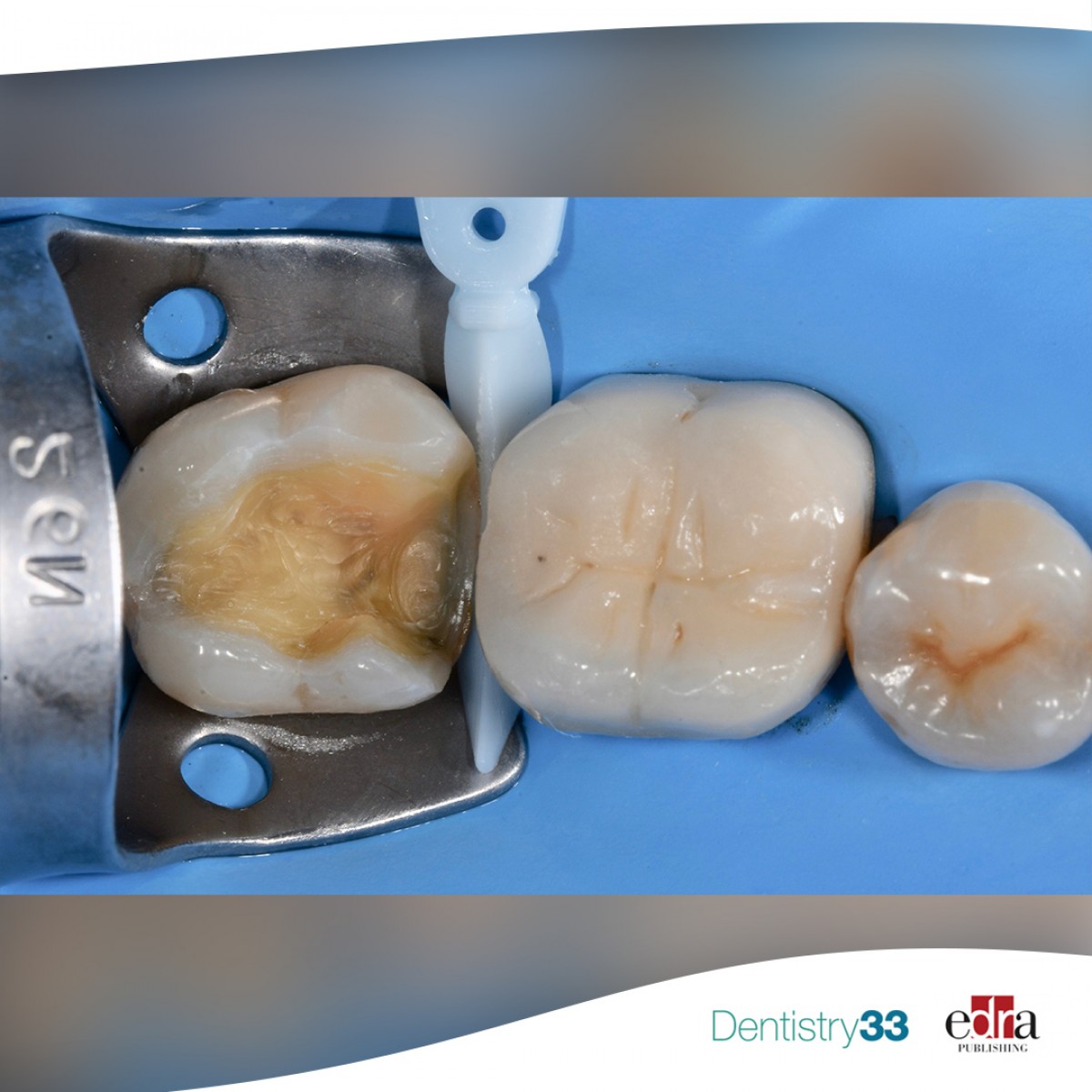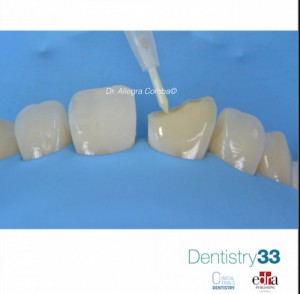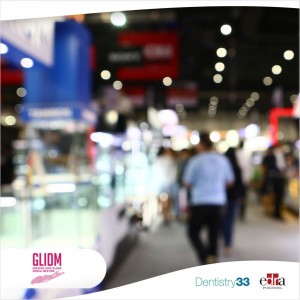
Cracked teeth syndrome: are they repairable?
Lara Figini
Dental cracks always represent a problem that is difficult to manage and diagnose by the dentist. The prognosis of a cracked tooth tends to be better in teeth where the fracture line ends within the coronal third of the root.
Such cracks give a typical bone resorption surrounding the fracture line, which is pathognomonic of the condition and often allows for definitive diagnosis. The etiopathogenesis of inflammation in radicular cracked teeth is attributable to bacterial penetration of periodontal pockets through the fissure line and localized bone resorption that occurs in a cracked tooth can be detected as a probing defect using a periodontal probe. However, the initially narrow pocket is often difficult to detect and only becomes more noticeable as it progresses.
The most accredited hypothesis in this regard proposes that longitudinal fractures originate from a crack in the dentin of the crown secondary to a chewing stress or due to weakened dentin (decreased in quantity or altered in quality) which can therefore break more easily, resulting in an incomplete fracture.
Chewing stress leads to an extension of the fracture downward to the pulp chamber resulting in infection and dental necrosis in many cases. Additional stresses on the tooth promote the extension of the fracture towards the root, which allows bacterial penetration deeper into the periodontium. Patients can present with a wide variety of clinical symptoms that are often difficult to associate with a crack, because the symptoms tend to disappear, or they can be widespread and often not attributable to a single tooth or a specific problem. Researchers and clinicians have tried to establish an effective therapeutic approach to preserve these teeth or at least to prolong their stay in the arch and not immediately resort to avulsion.
Materials and methods
In a retrospective observational study published in the International Endodontic Journal in October 2021, the authors studied the survival rate of teeth with root cracks restored with composite materials.
The study included 87 teeth with root cracks or cracks in 87 patients (46 men, 41 women) with a mean age of 50.2 years who were treated with adhesive composite restorations between 1991 and 2019.
Forty-five cracks were found in the upper posterior teeth (molars and premolars), 40 in the mandibular posterior teeth and only two in the anterior teeth, both at the maxillary level.
Based on the depth of the crack, the teeth were classified with proximal root cracks (PRCT), in which the fracture line was limited within the pulp floor or coronal third of the root, and with deep root cracks (DRCT), where the fracture line extended to the middle third and apex of the root canal.
Bone loss and recovery was assessed radiographically at one year. All patients were treated with surgical microscopy by the same operator. A logistic regression analysis was performed to determine independent predictors of extraction. Kaplan – Meier survival curves were used to analyze PRCT and DRCT.
Results
Among 87 cracked teeth, 66 were molars, 19 premolars and two incisors. Fifty-two were DRCT, 35 were PRCT, 46 had a periodontal probing defect.
Patients were followed for a mean of 66.9 months (standard deviation 44.6, min 1 to max 172). Lack of probing depth was a significant protective factor against extraction (odds ratio [OR] 0.027, 95% confidence interval [CI] 0.003-0.27, p < .05), whereas further bone loss (OR 10.63, 95% CI 2.08-54.36, p < .05) was a risk factor for extraction.
More than 50% of teeth treated with the adhesive protocol were functional (46 of 87 teeth [χ2 test], p < .05) at a five-year follow-up. Among the PRCT group, a 78% survival rate at five years was found, while among the DRCT group, a 58% survival rate was found.
Conclusion
Composite resin restorations resulted in tooth survival in less than 50% of patients; 85.4% of PRCT and 61.5% of DRCT were functional after five years of follow-up.
Clinical implications
The long-term prognosis of composite resin restorations of vertical root cracks appears promising. However, the use of an operating microscope is essential for diagnostic and therapeutic procedures.
Augusto Malentacca, Fabrizio Zaccheo, Matteo Scialanca, Francesco Fordellone, Cosimo Rupe, Carlo Lajolo. "Repair of teeth with cracks in crowns and roots: An observational clinical study." Int Endod J. 2021 Oct;54(10):1738-1753. DOI: 10.1111/iej.13598
 Tag
Tag
 Related articles
Related articles
Restorative dentistry 27 June 2023
Release of interface confined water significantly improves dentin bonding
Water residue and replacement difficulty cause insufficient adhesive infiltration in demineralized dentin matrix, which produces a defective hybrid layer and thus a bonding durability problem,...
Vaccine technology has evolved continuously since its beginning, and mucosal vaccination, including intranasal, sublingual and oral administrations, has recently gained great scientific interest.
Prosthodontics 18 October 2021
Bacterial adhesion to zirconia and lithium disilicate: data from a recent in vitro study
Restorative materials used in dentistry should have surface characteristics that inhibit bacterial adhesion and biofilm formation. Understanding bacterial adhesion (quantitatively) to different...
Restorative dentistry 25 June 2021
Preheating and bioactive development of a unidose 3-step etch-and-rinse dentin adhesive
Co-authors: A. Comba, F. Florenzano
Nowadays, the resin-dentin bond remains an issue for the durability of the adhesive direct restorations . The pre-heating of restorative materials is a recurrent tendency to increase...
USA 25 April 2023 - 26 April 2023
April 25-26, Melville, New York
All sessions will be held in the Hilton Hotel, to include full and half-day scientific programs and table clinics with over 140 exhibitions displaying the latest in technology, equipment, supplies...
 Read more
Read more
Editorials 10 October 2025
With proud smiles and crisp white coats, ninety-three learners from the DDS Class of 2029 and the International Dentist Pathway Class of 2028 marked the start of their dental careers at the UCSF...
Periodontology 10 October 2025
Continuous professional development (CPD) in Periodontology refers to the overall framework of opportunities that facilitate a life-long learning practice, driven by the learner-practitioner and...
TheraBreath, the #1 alcohol-free mouthwash brand in the U.S.*, has introduced a new line of dentist-formulated, clinically tested toothpastes designed to support professional oral care...
News 10 October 2025
New officers and trustees were installed at the Minnesota Dental Association’s Leadership Conference on September 19 in Minneapolis.
News 10 October 2025
Smartee Denti-Technology today announced that Professor Gang Shen, its Chief Scientist and Executive President of TaiKang ByBo Dental, has once again been named to the World’s Top 2% Scientists...





.png)









